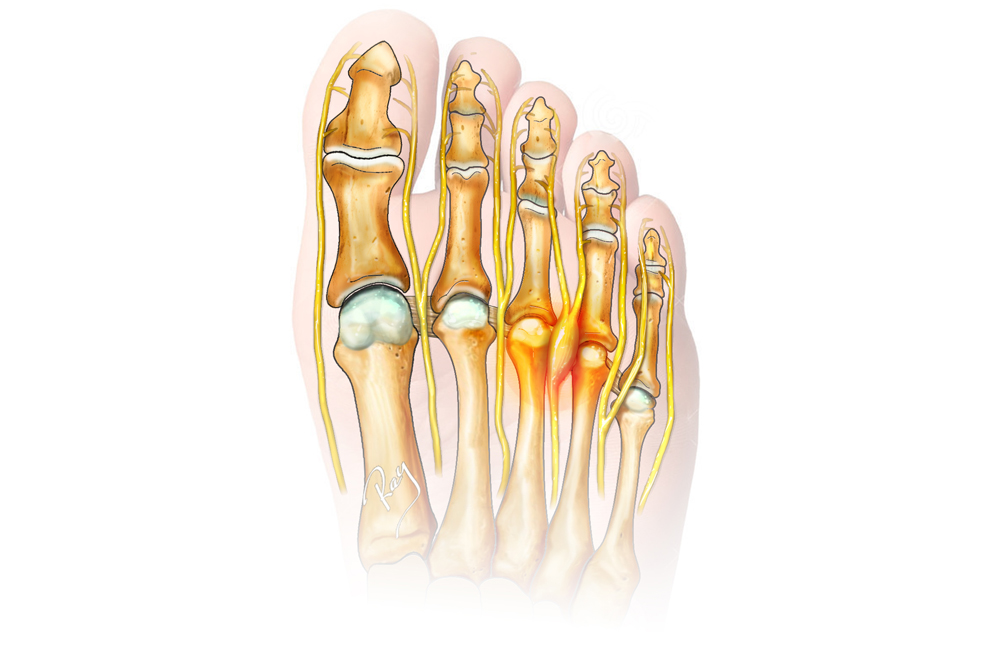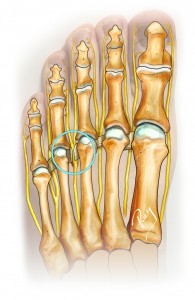What is it?
Morton’s disease or Morton’s neuroma is a common foot condition. It affects three women to one man and is characterised by pain in the forefoot. It usually affects the area between the third and fourth toe; however, it can sometimes affect the space between the second and third toe.
Nerves located between the metatarsals under the foot provide sensitivity to the toes. These inter-metatarsal nerves are branches of the medial and lateral plantar nerves. They separate at each of the metatarsal heads to provide innervating branches to each toe. The nerve located between the third and fourth metatarsal is the direct junction (anastomosis) of the lateral and medial plantar nerve and therefore seems to be less mobile and more easily injured.


